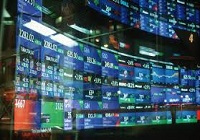In continuation with my previous article, I intend to take the discussion forward from the workings of a commodity market to how actual trading happens in a market. Derivatives such as futures and forwards form a large part of how trading in commodities actually take place.
In the commodity markets, trading happens simultaneously in two markets : Spot Market and in Futures Market. The spot market is where commodities are bought and sold for delivery in real time i,e the prices are same as those prevalent at the time of execution of trade. On the other hand in the futures market, the price that is to be paid for a certain commodity is a speculation on an expected price in the future, say 3 months ahead. However this price is available in present time itself. Trading in futures gives one a potential to benefit infinitely from swings in prices. In India, trading in commodities is done on the Multi commodity exchange (MCX).
However a basic understanding of derivatives is essential since many inexperienced traders do not realize the damage these financial instruments can cause if not employed with caution. Derivatives were also famously referred by Warren Buffet as “weapons of financial destruction”. However that is not entirely true. Derivatives offer immense potential to earn higher income in a smaller time frame than it is possible in the stock market. Derivatives are financial instruments that derive their price from the price of an underlying asset. A few example of derivatives would be futures, forwards, swaps, options etc.
Since futures are primarily the instrument of choice in the commodities market I will be keeping the focus of this discussion on futures and hopefully take up the rest in later articles. A future is a contract where a buyer agrees to buy a certain quantity from a seller at a certain price and on a certain date in the future, say 6 months from now. A future is a binding obligation on both the buyer and seller i.e both the buyer and seller have to settle the trade by delivery or by entering into an offsetting contract. Futures are exchange traded instruments, i.e they can only be traded on a specialized clearing house or an exchange such as MCX (Mumbai), NYMEX (New York), LME (London) etc. Futures contract are fixed in size, for eg a standard contract of brent crude traded on NYMEX consists of a 1000 barrel i.e buying one futures contract for brent means entering into a contract for buying a 1000 barrels of oil 6 months into the future. However the price for the same is decided in present i.e at the time of entering into a contract. The minimum fluctuation in the price of this contract is 0.01$, i.e a 10$ loss/gain per contract. Commodity trading housed usually buy thousands of contract and fluctuations can be from anywhere from $0.01 to $4.
Using futures in commodity trading helps in two main ways: Firstly it helps the buyer in securing the price of commodity in advance thereby protecting them from the risk in price fluctuations. Also it helps in assuring both the parties in eliminating counter party risk, i.e the risk of a party defaulting which may happen in case a seller might find themselves unable to deliver the required amount of commodity or the buyer unable to pay for it in due time. The futures exchange acts as a clearing house for both the parties and ensures both timely payment and delivery in a contract.
Now that we are clear with the basics of how futures work and how they help in minimizing risks of price fluctuation and counter party it is now convenient to discuss how trades are actually done. Usually the buyer approaches a trader registered with the exchange. It then instructs the trader to buy the requisite amount of commodity on its behalf. The trader can calculate the amount of contracts he needs to buy to obtain the right amount. This is sometimes a complex procedure since the quality, quantity and delivery points are usually fixed and standardized in an exchange traded contract. For eg : In NYMEX, the type of oil contracts that are traded are of only WTI Crude (type of oil; others include brent crude, bonny light) , in 1000 barrels (1 barrel = 158.9 litres) with delivery at Cushing, Oklahoma. This can create a problem for a firm wanting to trade in say Brent crude. In that case the firm can take still use WTI crude futures, as brent and WTI usually move quite closely in price. However it still takes on risks in these case. I will be discussing them in details in the coming articles.
Click here for government certification in Accounting, Banking & Finance




